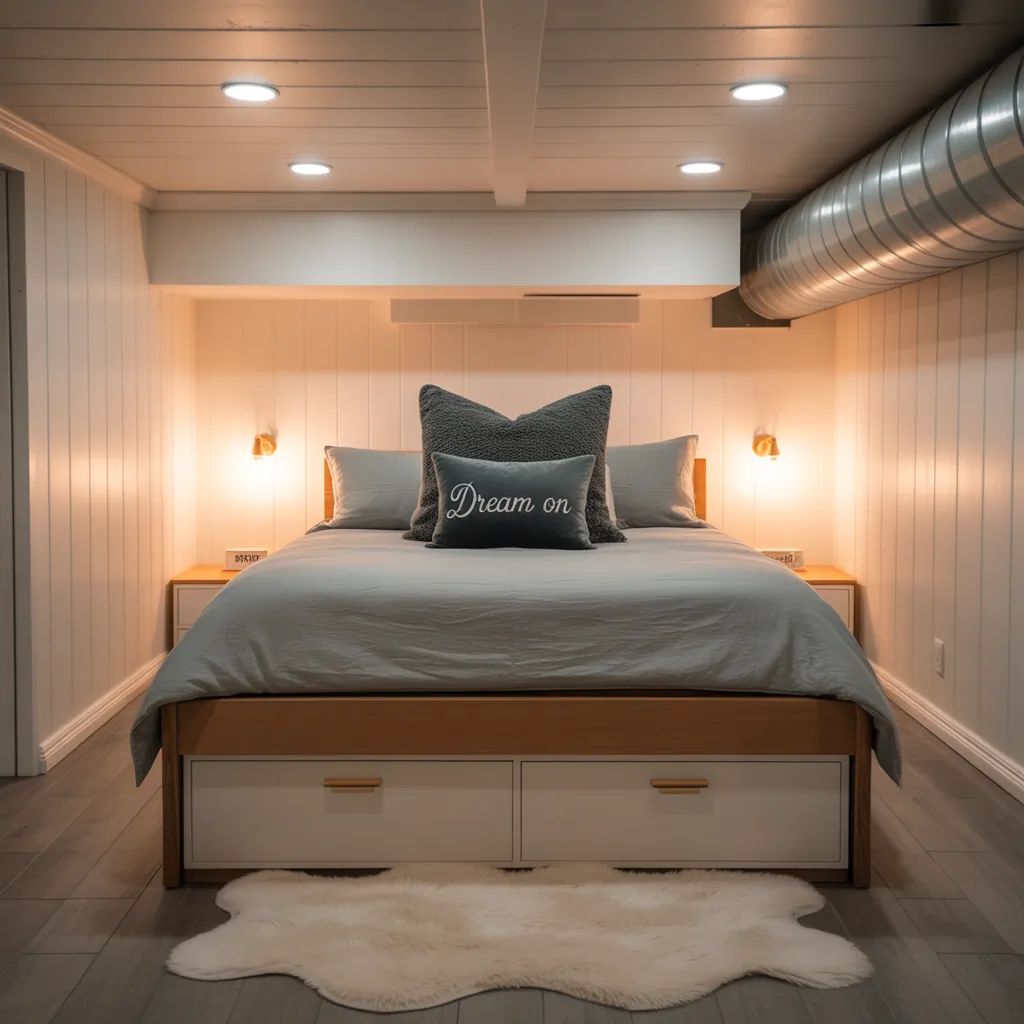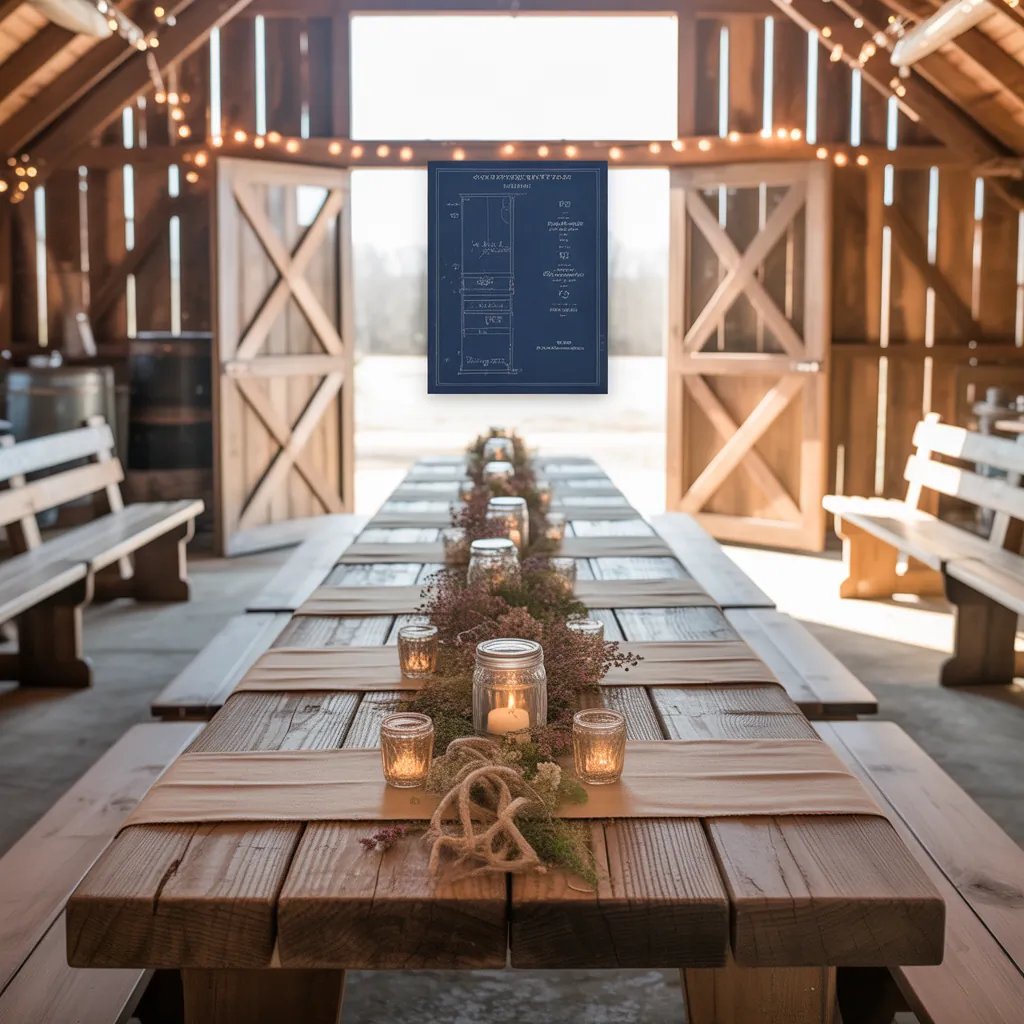Have you ever stared at your unfinished basement and imagined a cozy guest suite or a bright teen hangout — only to be stopped by one big problem: no windows? Transforming a windowless lower level into a comfortable bedroom is one of the most common home improvement challenges. With the right lighting, ventilation, and design tricks, a basement bedroom without windows can feel inviting, safe, and stylish.
Why Choose a Basement Bedroom Without Windows?
Using basement space for a bedroom saves on renovation costs, adds livable square footage, and can increase home value when done right. Windowless bedrooms are especially useful for:
- Guest suites or in-law apartments
- Home offices or media rooms that double as sleeping space
- Kids’ bedrooms or a rental bedroom where privacy and sound control matter
Before starting, remember: local building codes often require egress (a safe exit) for sleeping rooms. Check your municipality’s rules early so your design stays safe and legal.
Basement bedroom ideas without windows
Below are practical, stylish ideas to make a windowless basement bedroom feel like a bright, comfortable retreat.
Maximize light with layered lighting
- Install recessed LED cans for even ambient light. Choose 2700–3000K for a warm, bedroom-friendly tone.
- Add a dimmable central fixture or pendant for character.
- Use wall sconces and bedside lamps for task and mood lighting. Smart bulbs make it easy to change scenes for reading or sleeping.
- Accent with LED strip lights behind headboards or under shelves for soft glow and depth.
Create the illusion of windows and natural light
- Hang a large mirror or gallery of framed art that mimics outdoor scenes to reflect light and visually expand the room.
- Install a faux window — a framed backlit panel with printed scenery or LED “skylight” panels that simulate daylight.
- Use sheer fabrics and light-colored bedding to keep the space airy.
Prioritize ventilation and air quality
Without a window, mechanical ventilation is crucial. Options include:
- Extending HVAC ductwork or adding a dedicated supply register and return to the room.
- Installing a heat recovery ventilator (HRV) or an energy recovery ventilator (ERV) for fresh air exchange.
- Using a high-quality air purifier and a dehumidifier to control moisture and allergens.
Flooring, walls, and ceilings that feel fresh
- Choose vinyl plank or engineered hardwood with area rugs for warmth and low-maintenance care in basements.
- Paint walls in warm neutrals or soft pastels to brighten the space; avoid high-gloss finishes that can feel clinical.
- Consider a drop ceiling with acoustical tiles for easy access to pipes, or paint exposed joists black for a trendy look if ceiling height allows.
Furniture layout and storage
- Place the bed where it feels anchored — usually opposite the door or centered on the longest wall.
- Use built-in cabinetry or floating shelves to save floor space and keep visual clutter down.
- Choose multifunctional furniture: storage beds, fold-down desks, or Murphy beds for flexibility.
Step-by-step DIY improvement plan
Follow this simple roadmap to convert a basement space into a comfortable sleeping room:
- Check codes & safety: Verify egress requirements and electrical/ventilation standards with your local building department.
- Address moisture: Seal foundation cracks, install a vapor barrier, and confirm the sump pump and drainage work.
- Plan HVAC & ventilation: Add registers, vents, or an ERV/HRV unit to provide fresh air flow.
- Insulate & frame: Insulate walls and ceiling for temperature control and soundproofing.
- Install electrical: Plan layered lighting circuits, outlets, and switches; hire a licensed electrician if needed.
- Finish surfaces: Hang drywall, paint in light tones, and install flooring suitable for basements.
- Add design touches: Create a faux window, use large mirrors, add textiles and artwork, and furniture that fits the layout.
Practical DIY tips & real-world advice
- Moisture first: Never finish a damp basement. Dehumidifiers and proper waterproofing are non-negotiable.
- Soundproofing matters: Add insulation, resilient channels, or acoustic panels to reduce noise from above.
- Budget for professionals: Electrical, plumbing, and structural changes are worth hiring pros for — safety and code compliance are essential.
- Lighting controls: Install dimmers and multiple circuits so lighting can be tuned for different uses (sleeping vs. reading).
- Color psychology: Use warm neutrals and soft contrasts to avoid the “cave” feeling common in windowless rooms.
Design inspiration: Styles that work well below grade
Cozy Scandinavian retreat
Neutral palette, layered textiles, simple wood furniture, and soft warm lighting create a serene, airy vibe.
Modern studio bedroom
Minimal furniture, built-in storage, matte finishes, and strategic spot lighting make the room feel contemporary and uncluttered.
Guest suite with ensuite bathroom
If space allows, include a small bathroom and closet for a true in-law suite. Use pocket doors to save space.
Frequently Asked Questions
Can a basement bedroom legally have no windows?
Most local building codes require a safe means of egress from bedrooms, which typically means an egress window or door. Regulations vary by area, so check with your local building department before finishing a windowless room for sleeping.
How can I make a windowless basement bedroom feel brighter?
Use layered warm lighting, reflective surfaces (mirrors), light paint colors, and faux windows or backlit art. Keeping clutter down and using streamlined furniture also helps the room feel more open.
Is it safe to sleep in a basement without windows?
It can be safe if the room meets local safety codes, has adequate ventilation, and proper smoke and carbon monoxide detectors. Ensure there’s a legal escape route and that your HVAC system supplies fresh air.
Conclusion — Start turning that basement into a dream room
Basement bedroom ideas without windows can turn a dark, underused area into a comfortable, functional sleeping space. Focus on ventilation, layered lighting, moisture control, and clever design to make the room feel open and safe. Ready to begin? Check your local codes, plan your budget, and try some of these DIY projects — and if you want more renovation inspiration, explore our DIY projects and home design ideas pages for step-by-step guides and product picks.
Have a project in mind or questions about planning? Leave a comment or start your next project today — your basement bedroom transformation awaits.



